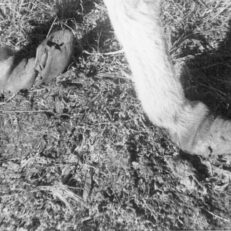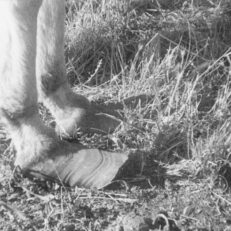Over the years as a general farrier, I have been called upon to perform hoof care on these gentle extensions of many families, and have always viewed the task as being very character building.
We have not done the donkey any favours by introducing them to the wet climate of the hills areas with the lush improved pastures which were great for dairy herds, but not really ideal for horses or donkeys.
So to start to understand the impact these factors have on the hooves we need only to clearly understand that because we have taken the donkey out of his natural environment, which was for the most part dry and stony country, and which allowed the hoof to be worn down naturally, we then have to provide him with regular hoof care to compensate.
The hoof growth rate of a donkey is the same as a horse which is about half an inch every six to eight weeks, so to leave his feet unattended for months causes great discomfort and reduces his mobility dramatically.
The leg bone structure of the donkey is very light and they tend to have a very upright hoof pastern angle, this means that they always grow more heel than toe, which means that regular hoof trimming is a must to avoid contracted frog syndrome or contracted heel syndrome.
Our highly improved pastures with lush clover and rye grasses also don’t do the donkey any good. If you notice your donkey beginning to develop that ‘double bum’ look and beginning to get thick in the neck or mane area, please take him off the pasture, put him into a dry bare yard and feed him meadow hay until he loses weight.
Grass founder in donkeys affects those tiny hooves in such overweight cases, and once the hoof capsule has distorted it is extremely hard to get it back to normal again.
The accompanying photos are of Adelaide Hills donkeys and this appears to happen far too often. Sadly they were beyond repair.
Hoof care is your responsibility and you as an owner must lift up and inspect your donkey’s feet regularly, then when it is time to call the farrier for hoof trimming there should be no dramas with behavioural problems, and the job can be completed properly. It is my opinion that all owners should seek to gain the knowledge to be able to carry out their own donkey’s hoof maintenance and trimming, and club workshops or clinics would be of great benefit to all.


